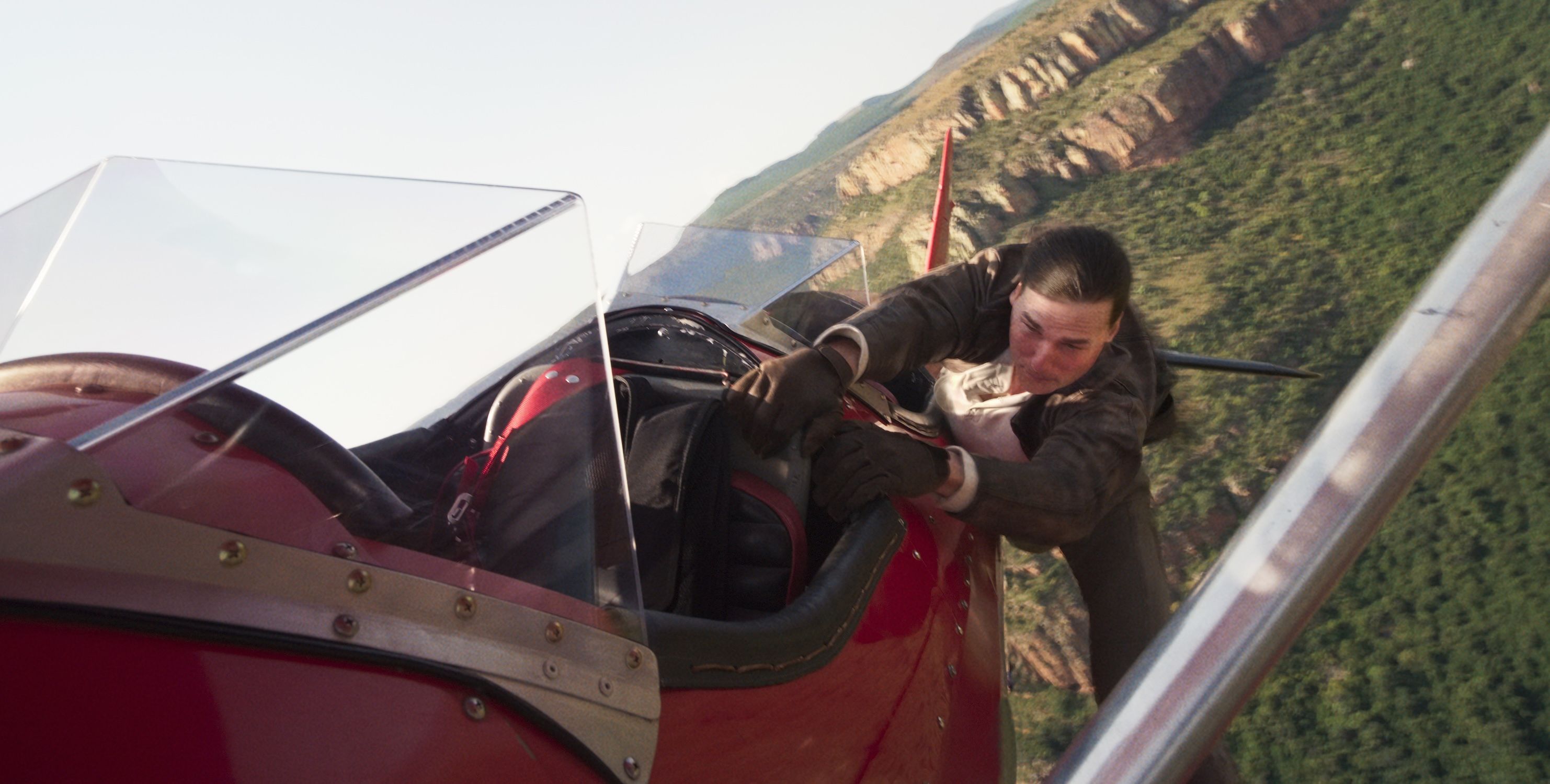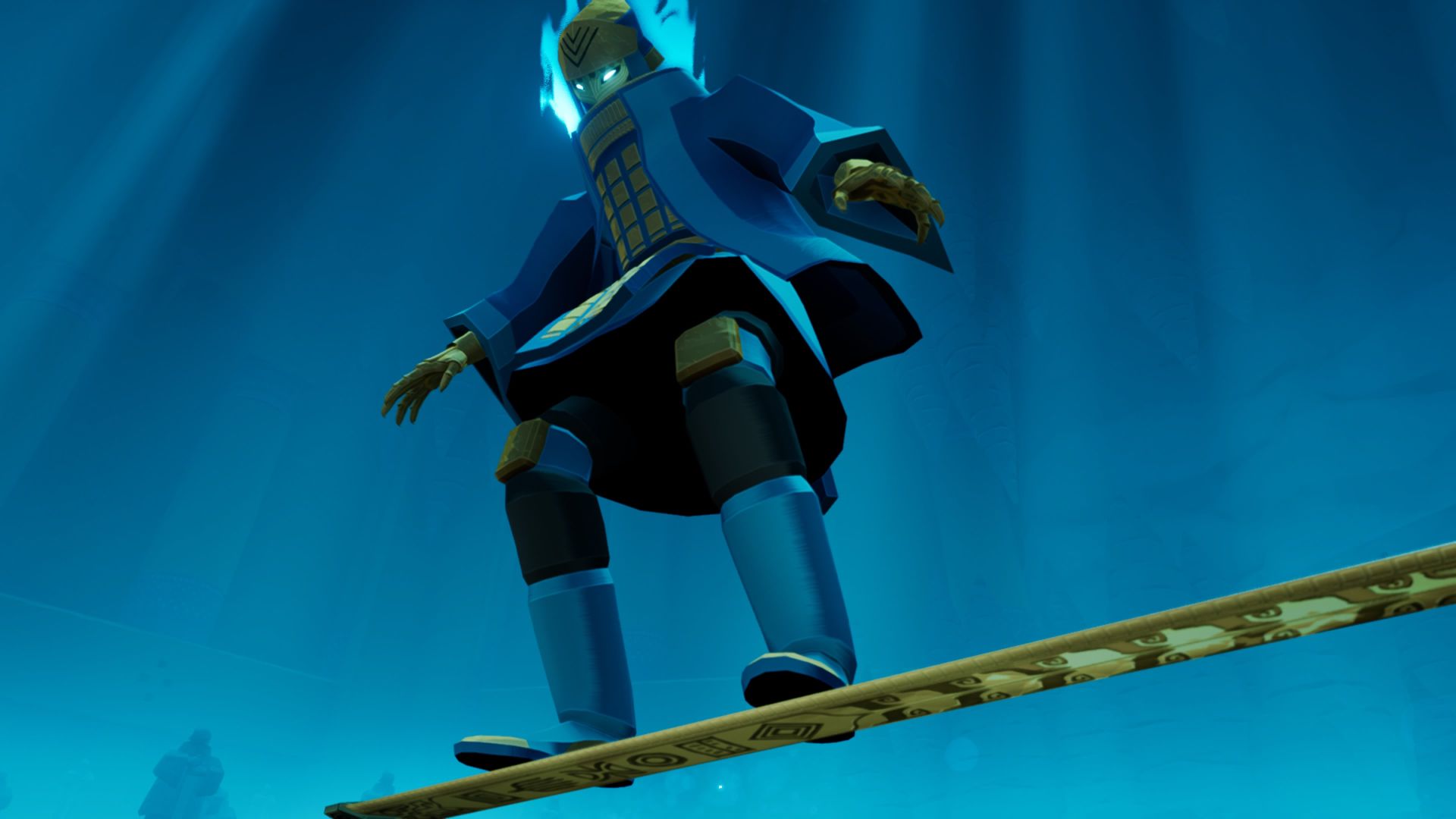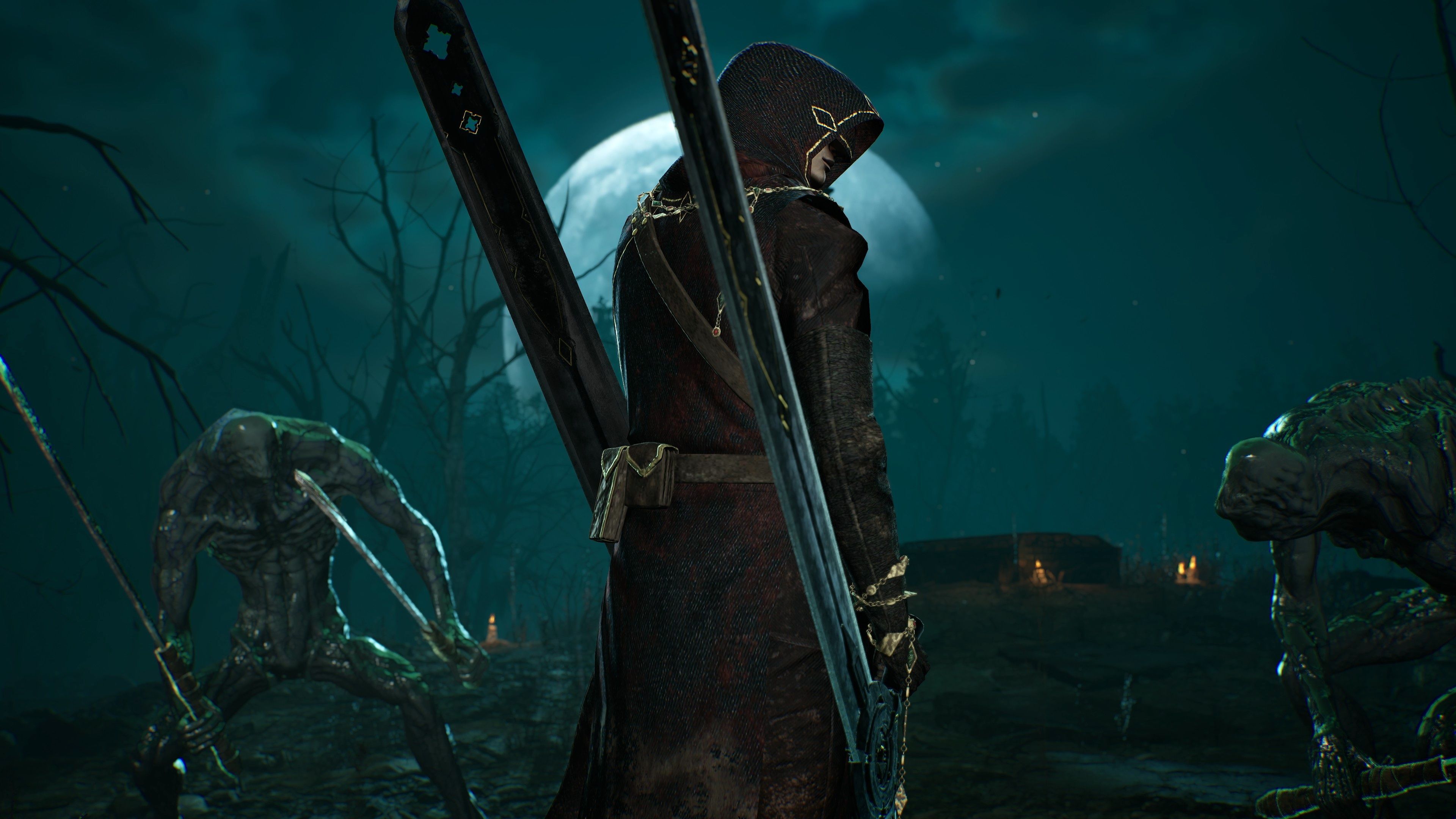Giant Squid knows a thing or two about immaculate vibes. The studio specializes in crafting vast, soothing worlds that are perfect spaces for getting lost. Sword of the Sea is the latest visually stunning indie adventure from the studio behind ABZÛ and The Pathless. It was co-founded by Journey artistic director Matt Nava, who serves as creative director, and the DNA of both Journey and Giant Squid’s previous titles can be found all over Sword of the Sea‘s massive landscapes and seascapes.
Speaking over video chat, Nava gave Polygon a closer look at the game’s development, the importance of getting the movement just right, and its connections to both ABZÛ and The Pathless.
“Yeah, [Sword of the Sea] is absolutely is related [to ABZÛ],” Nava says. “Most significantly, in terms of its visual design. It’s an evolution of the ideas that I was exploring in [ABZÛ]. All of my games are iterations on the same kind of idea of visual design, as well as game design.”
House style
ABZÛ and Sword of the Sea don’t just look alike — they take place in the same universe, as does Giant Squid’s previous title, The Pathless. While ABZÛ sees players step into the role of a lone diver working to restore a decimated ocean, Sword of the Sea tasks players with healing the land and restoring water to arid desert environments and frozen tundras. Players never swim or dive in Sword of the Sea. Instead, they surf across sandy deserts, icy mountains, and dreamy bodies of water filled with sea creatures that can fly as well as swim.
“We design a whole backstory and mythos and everything, and then we like to keep it very ambiguous and let the players connect the dots,” Nava says of the team’s writing process. “If you go for all the [collectible] secrets, you find a little breadcrumb that will help you think about it in [terms of its] relationship to the other games.”
While The Pathless includes written lore and text-based dialogue, ABZÛ has no text or dialogue whatsoever (aside from some early-game tutorials), instead using giant wall murals to convey its story without words. Sword of the Sea lies somewhere in the middle, and that’s completely intentional.
“After every game, we think about what we liked about making that game and what we would like to do differently,” Nava explains. “After we completed ABZÛ, it was like, ‘Let’s make a bigger game!’ And we made The Pathless, which is like, huge, it’s crazy. Then after The Pathless, we were like, ‘Maybe we’ll make something a little smaller, a little bit more condensed.’ It was almost a pendulum-swing. Now that we have done it a few times, we understand ourselves better.”
The team at Giant Squid went back and forth on which approach to take with Sword of the Sea. An early iteration had the characters actually speaking, but the studio eventually settled on a middle-ground approach in which no dialogue text was used, only the poems found on the hidden steles scattered around the game’s levels.
“I really like doing the big lift of the storytelling through the visuals, through the music, the color,” Nava says.
Smooth sailing
One of the biggest similarities between Sword of the Sea and Giant Squid’s previous titles is its movement. ABZÛ has a smooth, true-to-life swimming system with currents, schools of fish, and choppy waters. The Pathless featured what can best be described as “hardcore skate-sledding,” with players zooming across the game’s forests and grassy plains, firing arrows along the way. Sword of the Sea features a hoverboard-meets-surfing mechanic, and the game’s environments are littered with half-pipes and rails to grind. Perfecting that movement was no small task.
“This kind of movement stuff just takes a really long time, we’ve been working on it for almost five years,” Nava says. “When I start [making] games, I have a kind of hazy notion of what this game should be in my head. In this game, the thing that was clearest to me in my head was how the movement would feel. Movement is just one of those satisfying things games reward you, there’s these intrinsic rewards. It’s really satisfying.”
Using that movement to facilitate other intrinsic rewards — exploring new areas and finding little secrets — was Nava’s goal with Sword of the Sea. He says snowboarding and skateboarding games were a major source of inspiration, too.
“We can start from that and take it somewhere a little new,” he explains. “Like, ‘What if you had a snowboard that could go fast uphill?’ Which is kind of a basic premise of this game that you just take for granted. You don’t even think about it, even though every snowboard game you’ve ever played, you never go uphill, you only go downhill.”
Nava’s passion for swimming and scuba-diving led to ABZÛ’s underwater exploration, and similarly his love for surfing informed the creation of Sword of the Sea’s unique hoverboard-surfboard-sword movement.
“Surfing is this really magical experience,” he says. “You’re out there in nature, you are on a transport object. It’s not a vehicle. It doesn’t have a motor. You are just using the energy of the waves. You aren’t really in control. You have to let go of yourself a little bit. I think that there’s something really magical about that, and my own experience surfing and snowboarding was an inspiration for what the message of the game is and what we’re trying to say with it.”
So what, exactly, is the message of the game? Nava says seeing oneself as a part of the environment allows for a shifted, more meaningful understanding of that environment. You can’t control the waves of the ocean or the incline of a mountain, but you can get to know that ocean and that mountain by letting them act upon you.
“You’re able to be everywhere at once, basically,” Nava explains. “You’re able to kind of have this connection with nature that is meditative, even though it’s extreme. I think that there’s this reason that people do these extreme sports — it’s not just for the adrenaline rush, there’s something more to it. I’m hoping that the game is able to create a space where people might have a similar experience. I don’t think we can force you to have, like, a spiritual awakening or something. But I do think that we can emulate the kind of environment and conditions that gave me something like that [experience of awakening].”
The journey back to Journey
2012’s Journey had a similar kind of emotional resonance with players, but Nava says that its overwhelming success made him reluctant to use similar art styles and color palettes in the games he made at Giant Squid. He says Sword of the Sea is the first time he’s truly felt comfortable visually referencing the sandy dunes and rippling orange fabric of Journey again.
“Journey became this kind of ‘Game of the Year’ phenomenon thing, and it was just like, ‘What do you do next after that, you know, kind of early in your career?'” he explains. “So every [Giant Squid] game has kind of been exploring and pushing these ideas forward, but being very careful not to use the color orange. [I thought] ‘I’m not ready to kind of be compared to this thing!’ But when we did Sword of the Sea, I was like, ‘You know what? I’m ready to do my orange game.'”
Now that he’s made his “orange game” (which, to be clear, has many biomes with many different color palettes), Nava is looking to the future. The surfer, snowboarder, and game-maker is already excited to get to work on the studio’s next project.
“Despite all the difficulty and stuff, I love making video games, and I love making this kind of game, and I love working with this team, which is a really special group of people,” he says. “I want to keep doing that, and just trying to figure out a way to do that where we can do it and be healthy and have time for a break.”
“I’m just going to keep trying to make video games,” Nava adds. “That’s what we’re going to do. That’s all you can do.”



![22nd Aug: Aema (2025), Limited Series [TV-MA] (6/10)](https://occ-0-4343-999.1.nflxso.net/dnm/api/v6/Qs00mKCpRvrkl3HZAN5KwEL1kpE/AAAABRGHJShb2FCCc0zE5AcZFN0oo-VQ8f_Reamh5cBoDPSM5sI2Zmeo5Ungzcllti2vu5V-u3CRZCnOmetRBvxS6p-YDrZPIGfpXyWIv37Tt0uF7z-g8oD9gHGawxVuFETXzvyEnA0PZGN9jwelbTmTxI9V-vCd0nZ5zS_eWnc8MABypdVgUQIJymvbp2vBeEcybvge-C8gVA.jpg?r=871)










![22nd Aug: Long Story Short (2025), 10 Episodes [TV-14] (6/10)](https://occ-0-70-92.1.nflxso.net/dnm/api/v6/Qs00mKCpRvrkl3HZAN5KwEL1kpE/AAAABRium_lHanfoNKxzBIEZ57TXfv_VYcz22H5IdSbJLzyhqhnNDSjhVmx9LQ6AcPK3a-ER8tTkihYJW5T9795vIQLIRSwbdxqWLdOBI8WDTHennCBnrlsoCEdp-T2utSNxm988PDI7BSiGxQSvavvYn8SfK_fbacY1gM2tLN8v7GbMWODtvz8zELQGfDhkgl8NBFzodA4iLQ.jpg?r=761)

